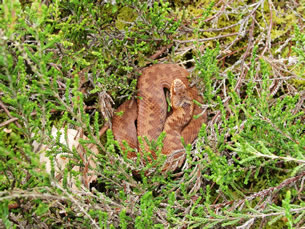With all the recent rain we have had over the last two weeks, flowering plants are at their best, and some of the best floral displays seen for years can be seen; this benefits all other wildlife also especially insects and birds. We may not like rain, but we need rain ! and we never get enough of it. Unfortunately it has been drummed into us that rain is bad, that is because we are so detached from nature.with no rain we have no cereals, no flowers and no drinking water amongst many other things. Even dry areas such as well draining cliff faces such as the sea cliffs at Southbourne in Bournemouth where I live are a floral picture of these seaside Californian daisies(Erigeron glaucus) among many other endangered acid grassland species.
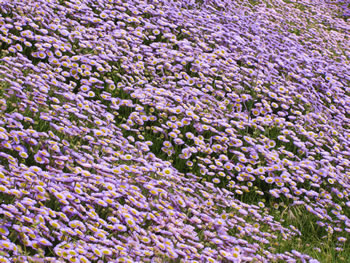 Purple is my favorite colour and insects that show purple are loved by me also . This ground beetle (Carabus problematicus) was found on a B.N.S.S field meeting by a member.It is similar to (carabus violaceus) the violet ground beetle but is more shiny and has larger granulations on the elytra(wing cases).
Purple is my favorite colour and insects that show purple are loved by me also . This ground beetle (Carabus problematicus) was found on a B.N.S.S field meeting by a member.It is similar to (carabus violaceus) the violet ground beetle but is more shiny and has larger granulations on the elytra(wing cases).
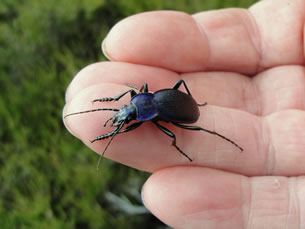 On the same area of heathland I found a large patch of Emporer moth larvae (Pavonia pavonia). There were well over one hundred of them on the heather, their main food plant.There may be a dozen or so that survive to pupate in late summer. The adult moths are pictured in an earlier post.
On the same area of heathland I found a large patch of Emporer moth larvae (Pavonia pavonia). There were well over one hundred of them on the heather, their main food plant.There may be a dozen or so that survive to pupate in late summer. The adult moths are pictured in an earlier post.
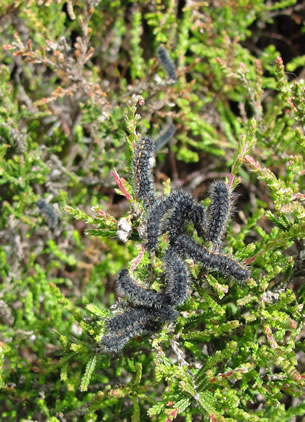 The sika deer are in their foxy red summer coats and the stags are regrowing their antlers.
The sika deer are in their foxy red summer coats and the stags are regrowing their antlers.
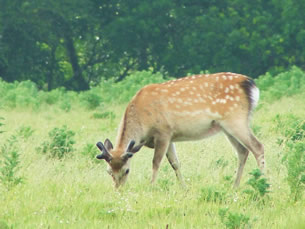 A juvenile adder (Vipera bearus) basks in the morning sun in between showers of rain. When rough weather prevails for several days they are desperate to bask and make the most of every available break in the weather. This is a female; they retain their orange brown juvenile colouration for longer,but some keep it for life. but most males change as they get larger to white with dark markings.The gravid (pregnant) females need the heat even more so as as their name states, they give live birth so need to move around with the warmth from the sun to incubate the growing young inside.
A juvenile adder (Vipera bearus) basks in the morning sun in between showers of rain. When rough weather prevails for several days they are desperate to bask and make the most of every available break in the weather. This is a female; they retain their orange brown juvenile colouration for longer,but some keep it for life. but most males change as they get larger to white with dark markings.The gravid (pregnant) females need the heat even more so as as their name states, they give live birth so need to move around with the warmth from the sun to incubate the growing young inside.

